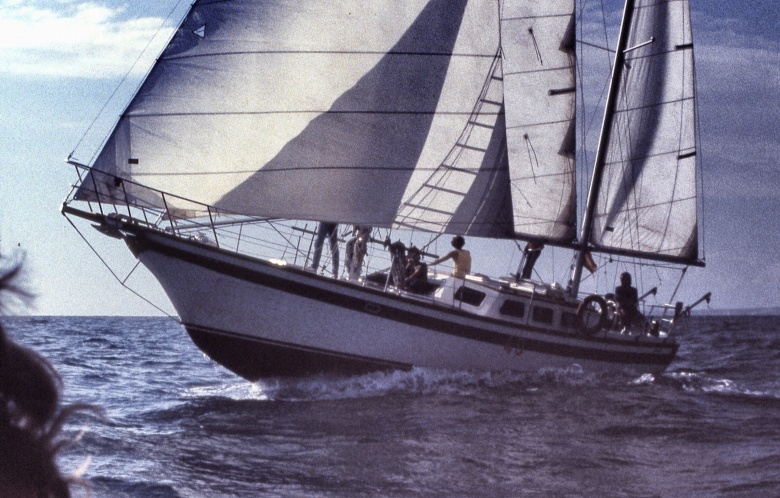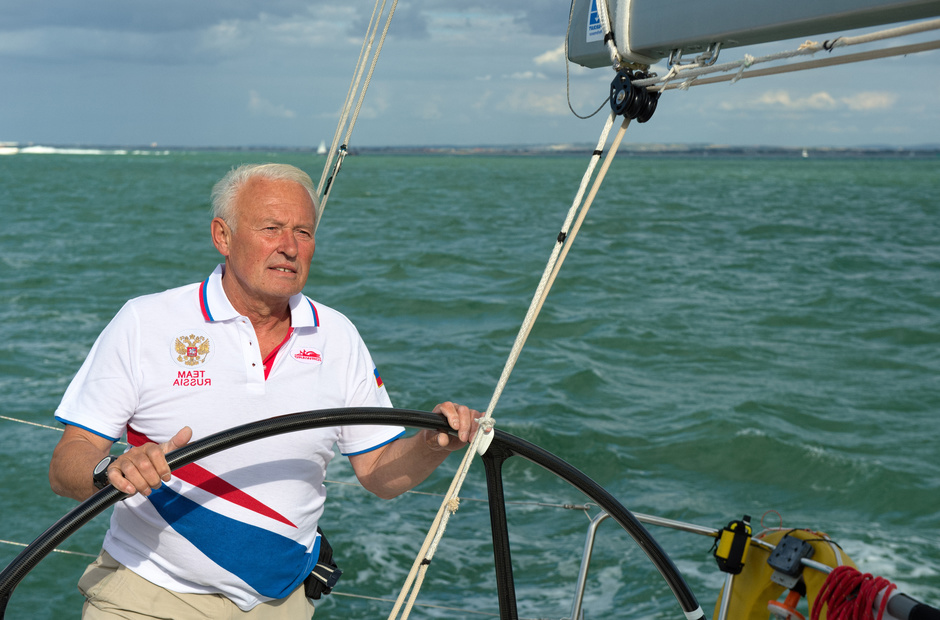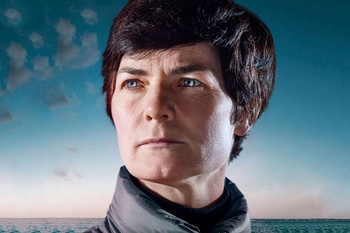In Pavilion 14 of the «Crocus»Expo, where the Moscow Boat Show»started «yesterday, a group of people in 50 gathered on a small platform for press conferences organized by Yacht Russia magazine. They came to listen to Igor Zaretsky - Yaroslavl, the winner of the Jester Challenge 2010 ocean single race.

In 2018, the world will turn 50 and to celebrate the anniversary, the organizers planned to repeat the competition on the same boats as Knox-Johnston. This means that boats between 32 and 36 feet long, built before 1988 and not equipped with modern electronics, are allowed.

Instead of electric autopilot - cult and timekeeper, by satellite phone, communication only with the organizers of the competition, which once a week should inform their coordinates. The radio is sealed in a special envelope, which can only be opened as a last resort. It is not permitted to use GPS, calculator, modern cameras and movie cameras.
50 years ago there were no such restrictions for participation in Golden Globe Race. The boats were very different in design. Suhaili Knox-Johnson was the simplest of them, and she was the only one who reached the finish line. In 2018, the organisers tried to make sure the struggle for victory was fierce. They specifically formulated the rules of the competition in such a way that all competitors were in equal conditions, and chose models with no «twists»and turns, but characterized by great reliability.
«All 22 approved projects are distinguished by a long keel line, the rudder hangs right on the keel. They have a rather high ballast to displacement ratio. If the boat has a displacement of 8 tons, it has more than 3 tons of ballast. The selection of these boats suggests that many will reach the finish»line, - concludes Zaretsky.
This, however, did not prevent one of the yachtsmen who applied for the competition from dropping out before the start: Australian Shane Freeman on Mushka lost his mast when rounding Cape Horn on his way to the starting line of the Golden Globe Race in English Falmouth.

«I've always liked two-mast boats. The single-mast aviators are inferior to the two-mast ones, but there are very few aviators. But there is another spare part that can be supplied instead of the main mast»," he explains his choice.

In preparation for the Golden Globe Race, Zaretsky is studying the list of what he took aboard Knox-Johnston. The British preferred natural products over dry mixtures and even managed to bring 300 eggs.
«We had sublimates on the Middle Sea Race. We poured them with water, waited five minutes, and then we ate," recalls Zaretsky. - We see some white and black little balls squeaking on our teeth. Everyone couldn't understand what kind of seasoning it was. When I got home, I went to the manufacturer's website and read that each bag contains silica»gel.
Buying a yacht for Igor Zaretsky is paid by Yacht Russia magazine.
«We believe it's a national sailing project. That's why we are going to advance the purchase of the boat now, because it can't be pulled any longer, but we will be running a crowdfunding campaign. You understand that in our conditions, no magazine makes a living. Of course, that's a lot of money for a magazine. We count on the help of sailing enthusiasts and those sponsors we can attract»," says Vasily Senatorov, publisher of Yacht Russia.
The cost of the whole project is estimated at 200 thousand euros.

This is one of the few projects in which Russia can claim to be a sailing power, said Vasily Senatorov. In the technology of building racing boats, Russia is hopelessly behind the United States and European countries. We have no chance in such races as the Vendee Globe and Extreme Sailing Series, which use electronically stuffed high-speed hydrofoil sailing boats. However, in a character race, such as the Golden Globe Race 2018, we can compete on an equal footing with Western yachtsmen, he says.
The details of the invoices, to which anyone who wishes to help the yachtsman can transfer funds, are on the Yacht Russia website.










